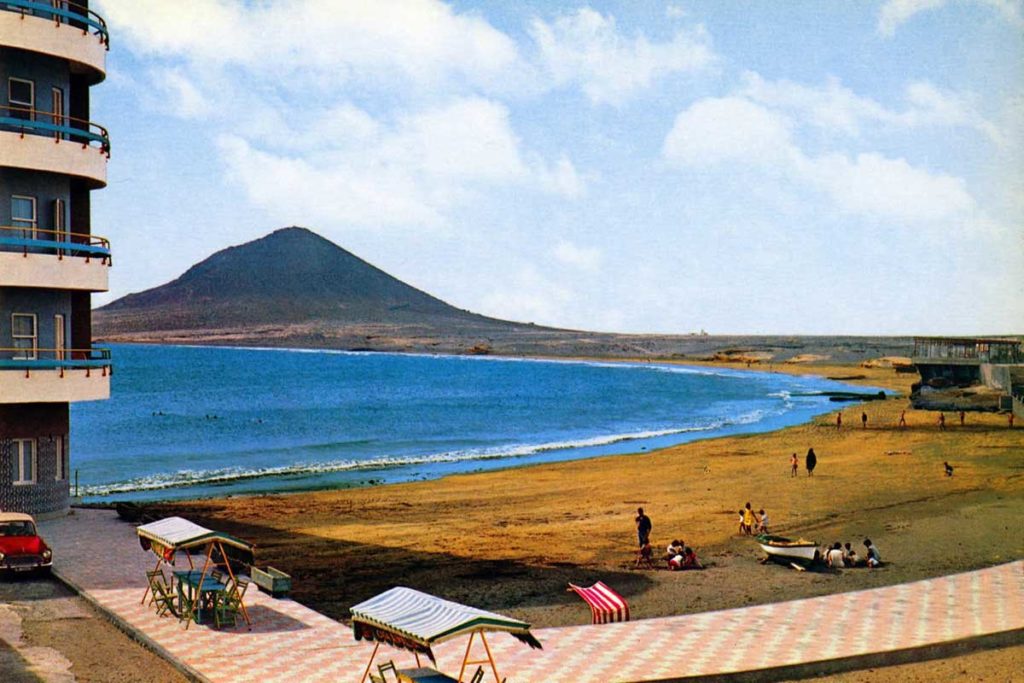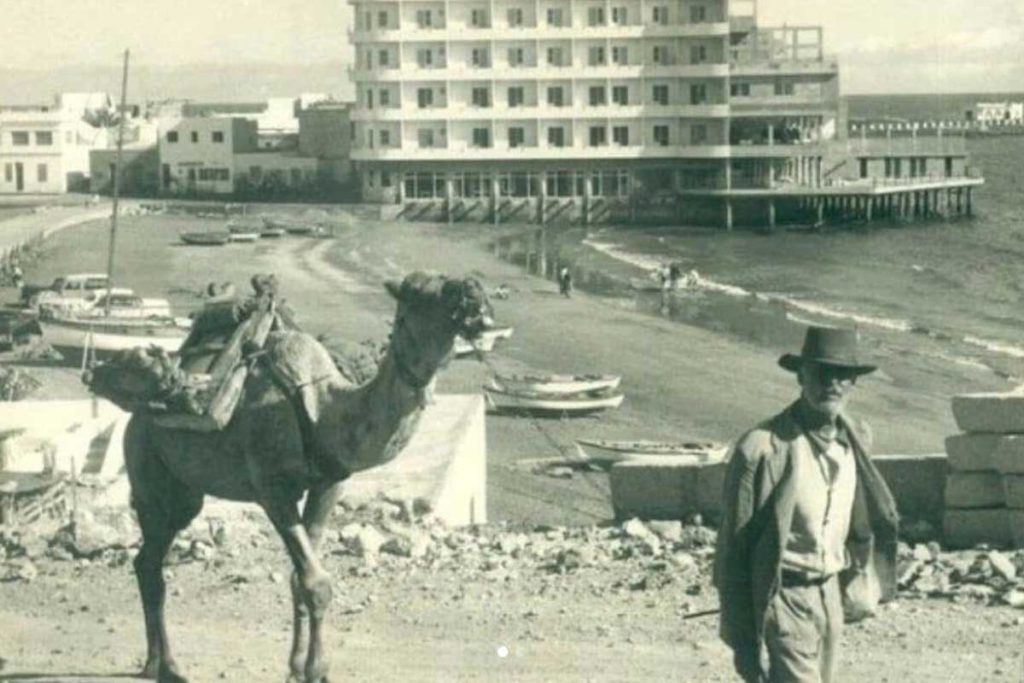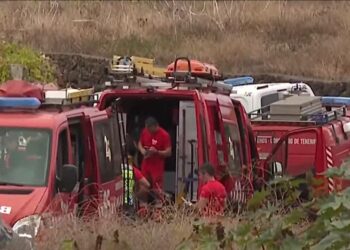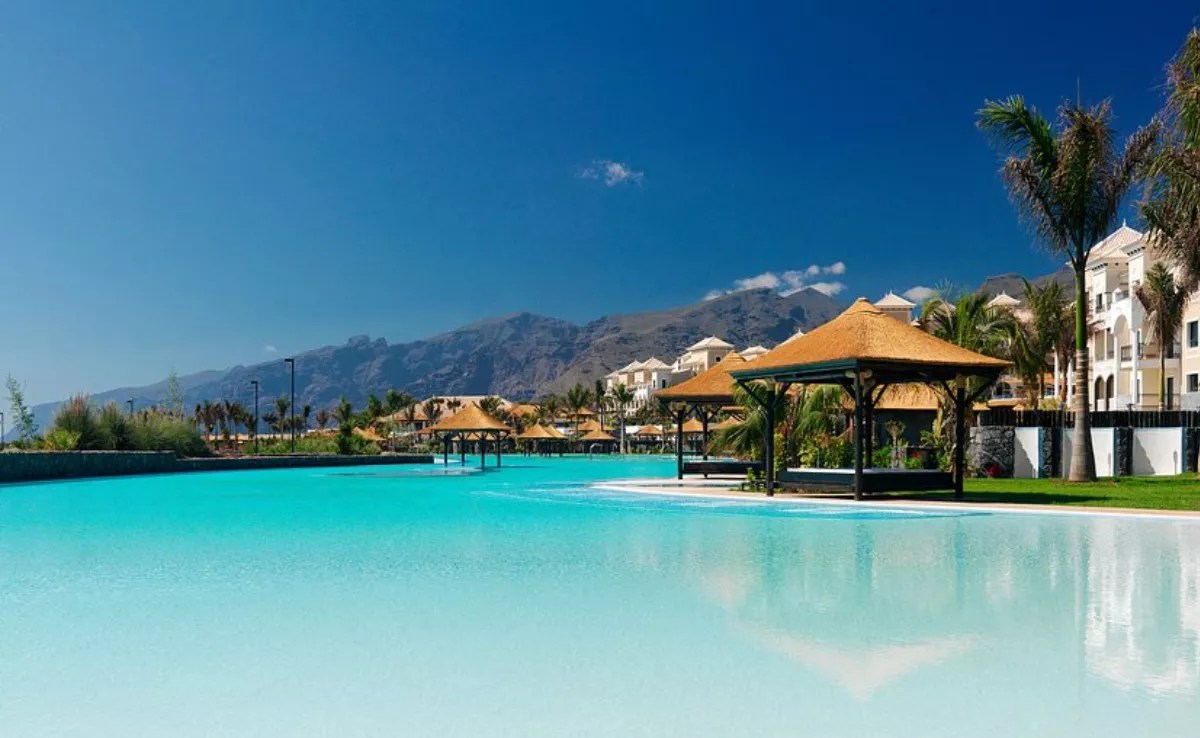In 1963, while the south of Tenerife remained rooted in an agricultural model, without motorways or an airport (the Los Rodeos airport was over five hours’ drive from some areas), a building changed the landscape of El Médano to take the first step towards an irreversible economic transformation. The seed of tourism was sown by this eponymous hotel, a pioneering infrastructure in the region that marked a significant turning point: the transition from tomatoes to tourism.
The promoter of this revolution was Francisco García Feo, known as Frasco. An agricultural landowner and manager of tomato packing facilities for Fyffes, he was the first to recognise the potential of tourism as an economic driver. His boldness lay in building the first hotel in the area in a fishing village that barely had a hundred houses.
The building was erected on an old packing facility that faced the Montaña Roja directly. It was designed by the Marrero studio, with plans from Félix Sanz Marrero and descendants of the influential architect José Enrique Marrero Regalado, who was also from Granadilla. The project proposed a Spa Hotel for Tourism, with ambitions of being declared a national tourist interest. It complied with the regulations of the General Directorate of Tourism in Madrid and comprised 65 rooms on a plot of just 1,100 square metres.
On 8 October 1963, the south dressed up for the occasion. The inauguration was attended by notable figures such as Alfredo Carrillo Durán, the vice president of the Cabildo, Pedro Cruz García, civil, military, and religious authorities, and prominent individuals like the president of the Tenerife Cabildo, Isidoro Luz Carpenter, and Cándido García San Juan—who would later promote the Gran Tinerfe hotel.

All this occurred against the backdrop of the economic acceleration driven nationally by the Development Plan of 1962, promoted by Manuel Fraga Iribarne at the head of the Ministry of Information and Tourism.
What followed was an unprecedented acceleration of development on the Island and, specifically, in the southern region. In 1969, the square of El Médano was urbanised; in 1971 the motorway arrived, an infrastructure that would transform island mobility; in 1973, the urbanisation of the town centre was completed; and in 1978, the southern airport was inaugurated.
The pioneering vision that Don Frasco had aligned with the deep structural changes beginning to take shape in the country, at a time when Spain was projecting comprehensive transformations after the erosive and destructive post-war period.
As Carlos Amaral, a resident of El Médano and former president of the local festivities, recalls, “back then, this village had just over four houses.”
The first tourists to arrive were Swedes attracted by the sun and tranquility. Many locals began investing in bars and restaurants to cater to the families arriving to enjoy the Islands. Thus, little by little, tourism began to take root.

Amaral clearly remembers how the village used to be. The contrast is stark. “Right there was the only telephone, Claudina’s,” he recalls. What is now the square, “was populated by bushes,” and when the tide came in, “it reached as far as the current taxi stop.” His words capture a time when El Médano was an isolated fishing nook.
Even so, the Hotel Médano did not sail through calm waters. In 2005, the General Directorate of Coasts declared its concession expired due to multiple construction irregularities: excessive building, unauthorised additions, illegal uses… In 2010, its demolition was ordered. By 2015, the Supreme Court upheld that decision. The Granadilla City Council defended its heritage value, approving its inclusion in the Municipal Architectural Catalogue with full protection. However, it was not granted the declaration as a Cultural Asset of Interest, being rejected for not meeting “exceptional” value.
Nevertheless, in 2022 the council signed an agreement to grant it cultural and tourism use, while litigation continues to prevent its partial demolition.















